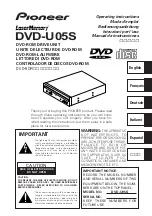
Parker EME
Setting up Compax3
192-120113 N08 C3I12T11 - December 2010
209
Feedforward channels
In this chapter you can read about:
Influence of the feedforward measures .......................................................................... 209
Motion cycle without feedforward control ....................................................................... 210
Motion cycle with feedforward measures ....................................................................... 210
The feedforward channels are used for the specific influence of the guiding
behavior of a control. The calculated and evaluated status variables are coupled
into the corresponding places within the controller cascade. In practice, the
feedforward control offers the following advantages:
Minimal following error
Improves the transient response
Gives greater dynamic range with lower maximum current
The Compax3 servo drive disposes of four feedforward measures (see in the
standard cascade structure):
Velocity Feed Forward
Acceleration feed-forward
Current feed-forward
Jerk feed-forward
The above order represents at the same time the effectiveness of the individual
feedforward measures. The influence of the jerk feedforward may be, depending
on the profile and the motor, negligibly small.
But the principle of feedforward control fails in limiting the motor current or the
motor speed during the acceleration phase!
Influence of the feedforward measures
Following error minimization by feedforward control / course of the setpoint
generator signals
xws:
Position setpoint value of the setpoint generator
nws:
Velocity setpoint - setpoint generator
aws:
Acceleration setpoint value setpoint generator
rws:
Jerk setpoint value setpoint generator
Please note!
















































